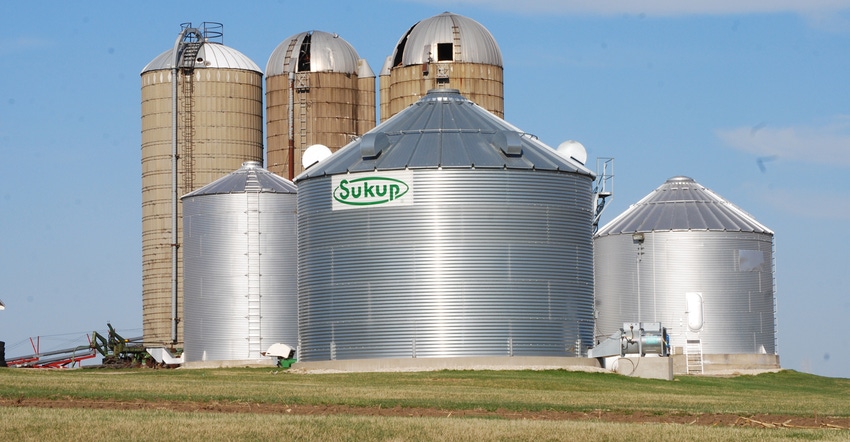July 13, 2018

With the large drop in corn and soybean prices since late May, many farmers may be caught with large amounts of unpriced old- and new-crop corn and soybeans. The need for a structured marketing plan with reasonable time and price objectives has proven to be invaluable. Farmers who are faced with the decision to sell at a low cash price or endure commercial storage costs are now wondering if they should consider building more on-farm grain storage.
Build storage for right reasons
Here are five good reasons for building additional storage:
1. Harvest efficiency. A farming operation with steady to increasing row crop acres and yields would likely benefit. By building more on-farm storage, you can improve harvest efficiency and don’t have to commit delivery of bushels at harvest.
2. Lower drying and shrink costs. Most farmers can dry and shrink their wet corn bushels cheaper than a commercial facility.
3. Sell carry for new-crop bushels. By selling the deferred futures contact, say July, an operation with on-farm storage capacity could then deliver bushels the following spring when better basis opportunities may exist. During the 2017 harvest, that carry was nearly 30 cents per bushel for both corn and soybean futures.
4. Improved basis. Basis is the local cash price minus the nearby futures contract. Basis is usually the widest or weakest at harvest when supplies are plentiful. By storing bushels with a lower cost structure, net returns can improve with higher futures prices or improved basis.
5. Flexibility. By building additional on-farm storage, farmers can spread cash sales and delivery of these bushels over several months without time and space constraints.
Improve marketing skills first
If you lack marketing discipline and the ability to use a variety of marketing strategies and tools, start there. Just adding more grain storage often extends the time frame a farmer speculates on higher futures prices.
The bottom line is, improve your crop marketing before you build even more storage bins. Speculating on futures prices by holding multiple years of crops hasn’t proven to be a winning strategy over the past six years. Imagine the missed opportunities to preharvest-market new-crop bushels using the futures seasonal prices that tend to peak in the spring each year.
Having adequate grain storage could have allowed for holding bushels beyond harvest to capture better basis opportunities. Capturing higher futures prices in the spring can help pay for those storage facilities.
Don’t buy way out of financial woes
Adding grain storage when cash flow is already constrained is generally not recommended. Think about your working capital, your shock absorber for your farm’s finances. A working capital rule of thumb is to take your current assets and subtract your current liabilities: having at least $200 per tillable acre is recommended.
Buying your way out of low crop prices isn’t the answer. Bad marketing habits have been accentuated with multiple years of tight profit margins.
If you can justify those five items — good reasons for building additional grain storage and improve your marketing skills — then you likely can justify more grain bins. Storage has a place, but you might want to start by talking to your lender.
Assess current storage capacity
Are you getting the most from your existing on-farm storage facilities? Many operations will harvest, dry, shrink and deliver their early-harvest corn to improve storage capacity. Adding even more storage requires careful planning and a business perspective. There is no one right or wrong answer regarding that decision to add more grain storage.
Farmers with bins on their farms are typically in a better position to manage their grain sales over time and use their marketing expertise, thus positively impacting farm profitability.
ISU Extension has an extensive list of publications, decision tools and videos on crop storage and marketing. You can find these resources on the ISU Ag Decision Maker site.
Johnson is an Iowa State University Extension and Outreach farm management specialist. He can be reached at [email protected].
About the Author(s)
You May Also Like






